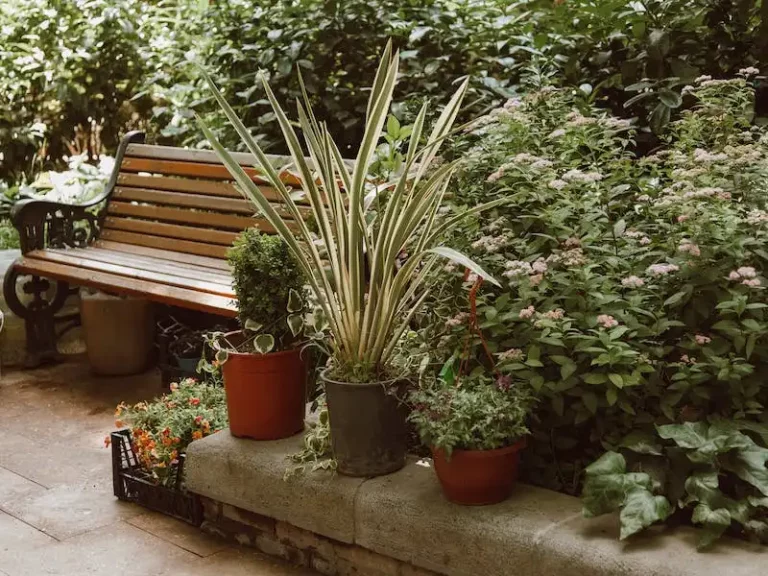Areca Palm, also known as Dypsis lutescens or golden cane palm, is a medium-sized palm tree native to Madagascar. It is popularly grown as an indoor plant and is especially prized for its elegant fronds and ability to purify the air. In this article, we will provide tips on planting and caring for Areca Palms, discuss its origins and requirements, and highlight reasons why it is a popular choice for houseplants.
Planting and Care Tips
When planting Areca Palms, it is important to choose well-draining soil and a location that receives bright, indirect light. These palms prefer slightly acidic soil with a pH level between 6.1 and 6.5. It is also crucial to avoid overwatering, as excessive moisture can lead to root rot and other diseases. Areca Palms have a relatively shallow root system, so make sure the soil does not become waterlogged.
Fertilizing the plant with a balanced, water-soluble fertilizer can help provide the necessary nutrients for healthy growth. Micronutrient deficiencies can cause yellow spots on the leaves, so using a fertilizer that contains iron, manganese, and magnesium is recommended. However, excessive fertilizer can lead to toxicity, so it is important to follow the instructions and not overfeed the plant.
Origins and Requirements
Areca Palms are native to the wetlands of Madagascar and are well-adapted to tropical environments. They are commonly found in the south of Madagascar, where they grow as understory plants in the forest. As houseplants, Areca Palms thrive in temperatures between 65°F and 75°F (18°C – 24°C) and require a relative humidity level of around 50%.
Due to its origins, Areca Palms can tolerate low light conditions, although they prefer bright, indirect light. Placing them near a north-facing window or using artificial lighting can help them thrive indoors. It is worth noting that Areca Palms are not cold-tolerant and should be protected from temperatures below 55°F (12°C).
Why Areca Palms are Popular Houseplants
Areca Palms are popular houseplants for several reasons. Firstly, they are considered one of the best air-purifying plants, helping to remove toxins from the atmosphere. Additionally, their elegant arched fronds give them a graceful appearance, making them a beautiful addition to any indoor space. Areca Palms are relatively low-maintenance and can adapt to a range of indoor conditions, making them suitable for beginners and experienced gardeners alike.
Lastly, Areca Palms are known to be resistant to most pests and diseases, although they can occasionally be infested by two-spotted spider mites or mealybugs. Regular inspection and prompt treatment using insecticidal soap or neem oil can help prevent infestations. Overall, Areca Palms are an excellent choice for those looking to add a touch of elegance and tropical charm to their homes or offices.
Growing Areca Palm Care Of Areca Palms Indoors
Areca palms, also known as Dypsis lutescens or chrysalidocarpus lutescens, are popular houseplants that can eventually reach a height of 6-7 feet indoors. These beautiful palms have feathery, arching fronds that add a touch of tropical elegance to any space.
When caring for areca palms indoors, it’s important to provide them with the right conditions to thrive. Areca palms prefer bright, indirect light, so placing them near a south-facing window is ideal. They can tolerate some direct sunlight, but too much can cause their leaves to turn brown and brittle.
Before repotting your areca palm, verify if it’s necessary by checking the roots. If the roots are circling the pot or growing out of the drainage holes, it’s time to repot. When repotting, make sure to use a well-draining potting mix and choose a container that is approximately 1-2 inches larger in diameter than the current one.
Fertilize your areca palm every 2-3 months during the growing season, which is typically from spring to early fall. Use a balanced, water-soluble fertilizer and follow the package instructions for the correct dosage. Over-fertilization can cause the tips of the leaves to turn brown and necrotic.
Water your areca palm regularly, allowing the top inch of soil to dry out before watering again. Avoid overwatering, as this can lead to root rot and yellowing of the foliage. However, make sure not to let the plant dry out completely, as this can also cause the leaves to turn yellow.
Areca palms are relatively pest-resistant, but they can occasionally be affected by pests such as spider mites and mealybugs. These pests can be controlled by wiping the undersides of the leaves with a damp cloth or by applying an insecticidal soap or horticultural oil.
Areca palms are also susceptible to diseases such as leaf spot, caused by the fungal pathogen Bipolaris sp. Infected leaves may develop yellow or brown spots, which can eventually lead to leaf drop. To prevent leaf spot, provide good air circulation and avoid overcrowding the plants. Fungicides can be used to treat severe cases of leaf spot.
In conclusion, growing areca palms indoors requires providing them with bright, indirect light, proper watering and fertilization, and regular pest control. By following these care guidelines, you can enjoy the beauty of these tropical palms in your home.
Areca Palm Houseplant Info
The Areca Palm, also known as the Butterfly Palm or Golden Cane Palm, is a popular choice for indoor plants. It is prized for its beautiful foliar display and can instantly add a tropical touch to any space.
The Areca Palm is native to Madagascar and is known for its feathery, arching fronds that emerge from multiple stems. If your fronds are turning yellow, it might indicate a problem with the plant. The most common cause of yellowing fronds is overwatering or underwatering. Make sure to water the plant regularly, but do not let it sit in water for too long. Also, check the roots of your Areca Palm for any signs of disease or rot.
In addition to water-related issues, there may be other reasons for yellow fronds, such as lack of nutrients or pests. Areca Palms are susceptible to mites, caterpillars, and other insects that can damage the foliage. If you notice any visible signs of pests, like webbing or holes in the leaves, please look for a suitable treatment or insecticide to control the infestation.
The Areca Palm needs bright, indirect light to thrive. It prefers temperatures between 65-75°F (18-24°C) during the day and slightly cooler temperatures at night. If the plant is not receiving enough light, its foliage may become weak and brittle. On the other hand, if it is exposed to direct sunlight, the leaves may develop brown spots.
Fertilization is an important aspect of Areca Palm care. Most fertilizers can be used, but make sure to follow the instructions on the packaging. Overfertilization can cause leaf burn, so it’s best to fertilize lightly and more frequently, rather than using a heavy dose less often. Additionally, micronutrient deficiencies might lead to yellowing fronds, so using a fertilizer with micronutrients can help prevent this issue.
Repotting is generally done every two to three years with a well-draining potting mix. It is important to water the plant thoroughly the day before repotting. When repotting, be gentle with the roots to avoid any damage. Make sure the new pot has drainage holes to prevent waterlogging.
In terms of spacing, the Areca Palm needs enough room to spread its feathery foliage. When grown outdoors, a spacing of 8 to 10 feet (2.4 to 3 meters) between plants is recommended. This allows the palms to grow into a dense hedge-like structure.
Areca Palms have various uses, both indoors and outdoors. They are often used as decorative plants in homes, offices, and commercial spaces. Outdoors, they can be grown in pots or planted in the ground to create attractive shrubs or hedges. They can also be used as a privacy screen when planted in a row or cage-like structure.
In conclusion, the Areca Palm is a popular houseplant that adds a touch of the tropics to any space. It requires bright, indirect light, regular watering, proper fertilization, and occasional repotting. By following these guidelines, you can keep your Areca Palm beautiful and healthy.
Areca Palm Care
The Areca Palm is a popular and relatively easy-to-care-for houseplant. If you’re new to growing Areca Palms or need a refresher, this care guide will provide you with all the necessary information to keep your plant healthy and thriving.
Light: Areca Palms can tolerate moderate to bright indirect light. Place them in a well-lit spot, like near a window, but without direct sunlight.
Watering: Keep the soil evenly moist, but not soggy. It is important to water your Areca Palm regularly, but allow the soil to dry out slightly between waterings. Ensure proper drainage to prevent root rot.
Fertilization: Areca Palms benefit from regular fertilization during the growing season. Use a soluble fertilizer and follow the instructions on the package for the correct dosage. Over-fertilization can result in leaf yellowing or necrotic leaflets.
Potting: Areca Palms can be grown in a variety of potting materials. A well-draining potting mix is recommended to avoid excess water retention. Repotting is usually required every 2-3 years or when the roots outgrow the current pot.
Pests and Diseases: Areca Palms are relatively pest-free, but they can occasionally suffer from infestations of pests like spider mites or mealybugs. Regularly inspect your plant for any signs of pests, and if necessary, treat them with appropriate pest control measures.
Temperature and Humidity: Areca Palms prefer warm temperatures between 65-75°F (18-24°C). They thrive in humid conditions, so misting the leaves or placing the plant on a tray filled with water and pebbles can help create a more favorable environment.
Care Tips:
- Keep the Areca Palm away from cold drafts or heat sources.
- Rotate the plant every few months to ensure balanced growth.
- Trim any brown or yellowing leaves regularly.
- If the tips of the leaflets become brown or brittle, it may indicate underwatering.
- Areca Palms are known for their air purifying properties, making them great additions to any indoor space.
By following this care guide, you can enjoy the beauty and benefits of the Areca Palm in your home or garden. If you have any further questions or concerns, please consult a gardening expert or horticulturist for more detailed advice.




